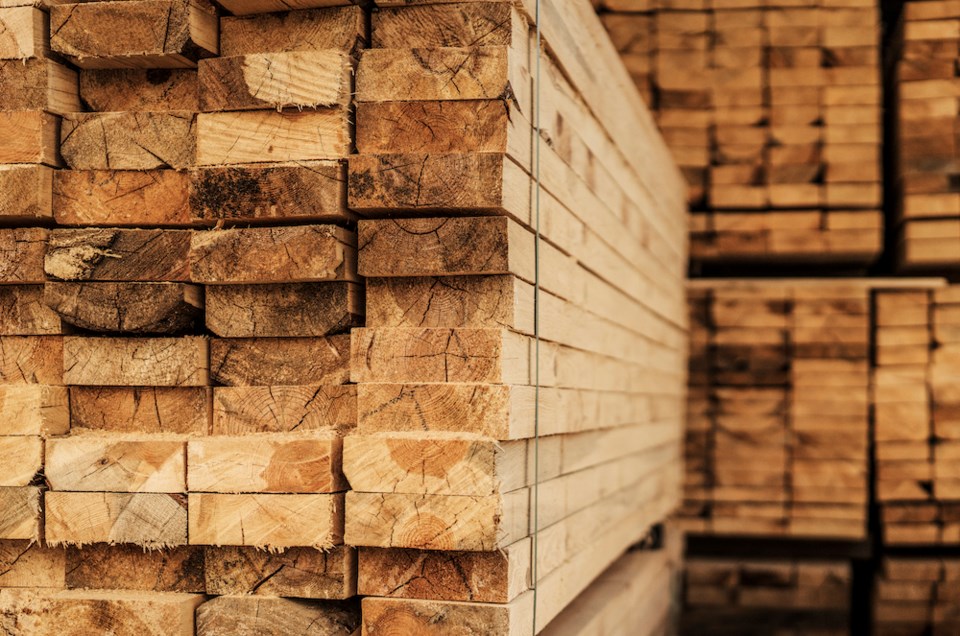The weak market conditions that prompted Canfor's announcement this week of production curtailments at its B.C. and Alberta sawmills will last until about midway through next year, two forest industry watchers are predicting.
By then, the price of western spruce, pine or fir two-by-fours should have bounced back to the break-even point, both Russ Taylor and Keta Kosman said Tuesday in separate interviews.
They estimate that level to be between US$500-$550 per thousand board feet, well above US$365 that Taylor said was quoted as recently as December 2.
Starting December 19, curtailments lasting from one to four weeks will be invoked. In a statement, Canfor CEO Don Kayne cited "significant decrease in demand for solid wood products and challenging economic conditions" as the reasons.
The curtailments - during which no lumber is processed - will be in place at Canfor's PG Sawmill and Plateau operations for four weeks and its Polar operation for three, Canfor communications director Michelle Ward said in an emailed response to the Citizen.
Taylor, CEO of Russ Taylor Global Wood Business and Market Consulting, also noted Canfor said it anticipates the majority of its B.C. sawmills will operate below full capacity in the new year, indicating its Alberta operations will be back to running at current levels by early 2023 while those in this province will not.
He said that's a function of the difference in the way stumpage works in the two provinces. Whereas it's adjusted on a monthly basis in Alberta, it's updated annually and quarterly in B.C., creating a lag effect.
As a consequence, he said Canfor made "outrageous profit" when the price of lumber was high and stumpage low, only to then endure stumpage that is too high relative to the market.
"Alberta mills rarely shut down due to stumpage costs because there's no lag," Taylor said. "Whereas the B.C. mills, especially the publicly-traded companies, is they have to record their windfall profits in one quarter because of low stumpage and the next quarter with very high stumpage rates and low market prices, they have to show their shareholders they won't burn cash so they have to look at curtailments so that becomes the problem."
However, Taylor doubts the system used in B.C. will be changed anytime soon.
"It's been this way since 2004 when the whole formula was devised around the U.S. softwood lumber deal," he said. "This formula is tied to the Americans overseeing our forest policy and our stumpage formula so, no chance."
Kosman, who owns Madison's Lumber Reporter, predicted the price will "stabilize" at $600-$800 but it will take awhile to reach that mark and hedged her bet by saying it will take until halfway through 2023 to know whether the so-called "new normal" will be reached.
She called the curtailments a "rational response" to the reigning price for lumber and said it will take awhile for increases in interest rates to have had their effect on the U.S. housing market, which is the prime customer for B.C. lumber. However, Kosman is optimistic the curtailments will come off in January when prices traditionally start to rise.
Taylor's forecast also came with qualifications but added he doubts the price will remain this low for much longer and expects to see the price cycle back up to a more sustainable level while the stumpage rate should ease off and provide the industry a bit more breathing room.
"Overall, I expect prices to average about $500 over the year, but again it'll be the second half where you get prices moving up again and struggling in the first half," Taylor said.



